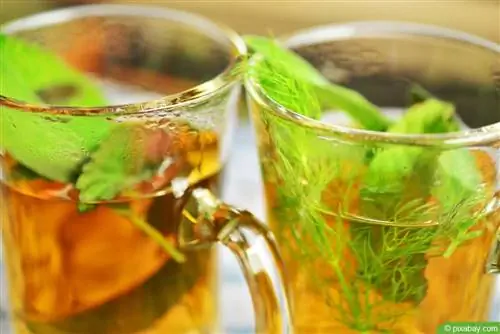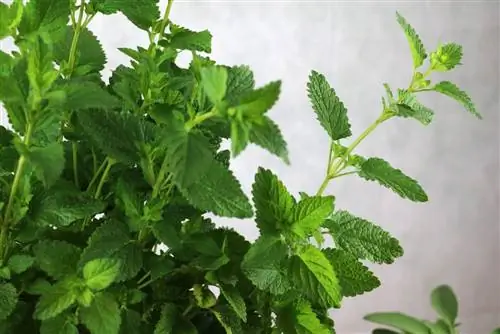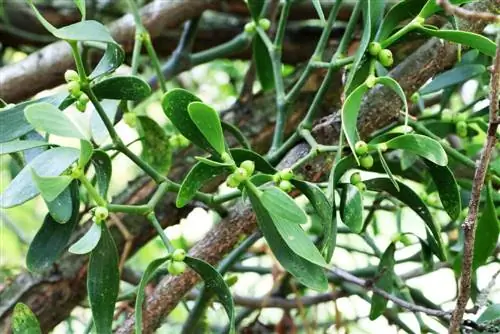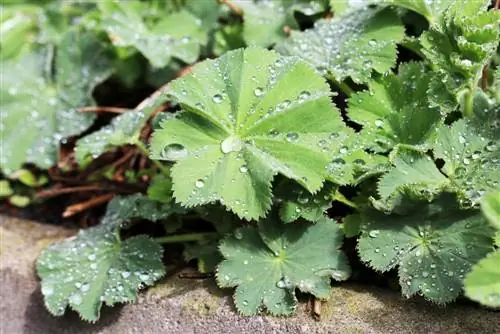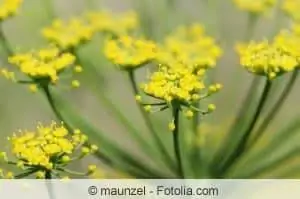- Author admin [email protected].
- Public 2023-12-17 03:39.
- Last modified 2025-01-24 12:45.
Fennel tea is said to have many good properties and has long been a very popular home remedy for gently and purely herbal treatment of colds and problems in the digestive tract or for supportive therapy. It's also very easy to make your own tea from fresh fennel and even grow your own vegetable fennel. We help with tips and recipes.
Effect
The supposed effect of fennel tea is said to loosen mucus in the bronchi and the rest of the respiratory tract, soothe the stomach and relieve flatulence. This is why the tea is also given to infants if they suffer from flatulence or colic. However, it is also diuretic and gentle laxative. Therefore, large quantities of the tea should not be drunk.
Instructions for fennel tea
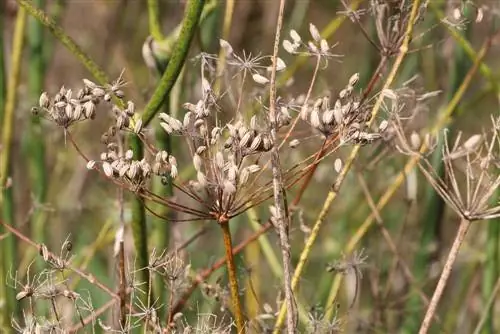
If you want to make fennel tea yourself, you need the fennel seeds or fennel fruits. These contain essential oils and secondary plant substances, such as fenchone and trans-anethole. In addition, the seeds contain sterols, phenolic acids, flavonoids and coumarins.
However, tea cannot be brewed from leaves. Just like the tuber, they contain vitamins and minerals, secondary plant substances and fiber.
If you don't have vegetable fennel on your balcony or in your garden, you can buy the seeds online or in brick-and-mortar stores to make your own tea. The following utensils are required:
- Mortar and pestle
- Tea strainer
- pot or cup
- tablespoon
The preparation proceeds as follows:
- One tablespoon of the fennel seeds per cup are thoroughly crushed in a mortar with a pestle. The seeds should no longer be recognizable as fennel fruits. The finer they are ground, the more essential oils are released.
- The crushed fennel seeds are placed in a tea strainer and boiled water is poured over them. 250 milliliters of water should be used per cup.
- After brewing for seven to ten minutes, the tea strainer can be removed.
Tip:
Since fennel tea can be very aromatic and slightly bitter, it is recommended to sweeten it with sugar or honey. Of course, this does not apply to diabetics. A finer taste and an increased effect against flatulence and cramps can be achieved if caraway and anise are added.
Fennel tea for babies and children
Infants and small children can also receive the tea to prevent or gently relieve flatulence and colic. However, care must be taken not to give too much tea. From the first day of life until the 6th month there should be no more than 50 milliliters per day. The tea is diluted and of course must not be too hot.
Grow your own fennel
Although fennel leaves cannot be used to make tea, fresh fennel can be used to make more than one recipe. It is particularly practical to grow the vegetable fennel yourself. This is possible on the balcony as well as in the garden.
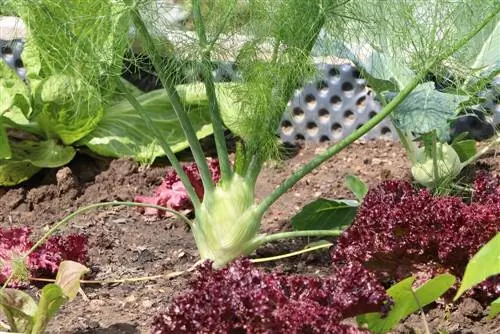
Just pay attention to the following point:
- The fennel seeds are grown in the house or greenhouse from mid-March. They should be placed in potting soil and placed in light. The substrate must always be kept slightly moist, but should not be wet. A germination temperature of around 18 to 22°C is ideal.
- After about three weeks, the seeds should have germinated and the shoots should already be a few centimeters high. When they are about five centimeters high, they are pricked out. This means that the plants from the cultivation container should be placed in larger pots, boxes or buckets and should be about 30 centimeters apart. Germs that are too weak can be removed. Plant soil or another nutrient-rich substrate should also be used. For example, plant soil with a compost content is recommended.
- After another three weeks at around 20 °C, it can be planted outdoors or placed outside in the planters. Until late frosts no longer threaten, covering with garden fleece makes sense. The location should be sunny, warm and protected, as fennel originally comes from the Mediterranean region.
-
The tubers and seeds for the tea can be harvested between September and October. Tubers harvested later often become tough, dry and bitter.
The fennel seeds should be kept dry and cool so that they last for several months. They should also be checked every now and then so that mold formation is detected early.

